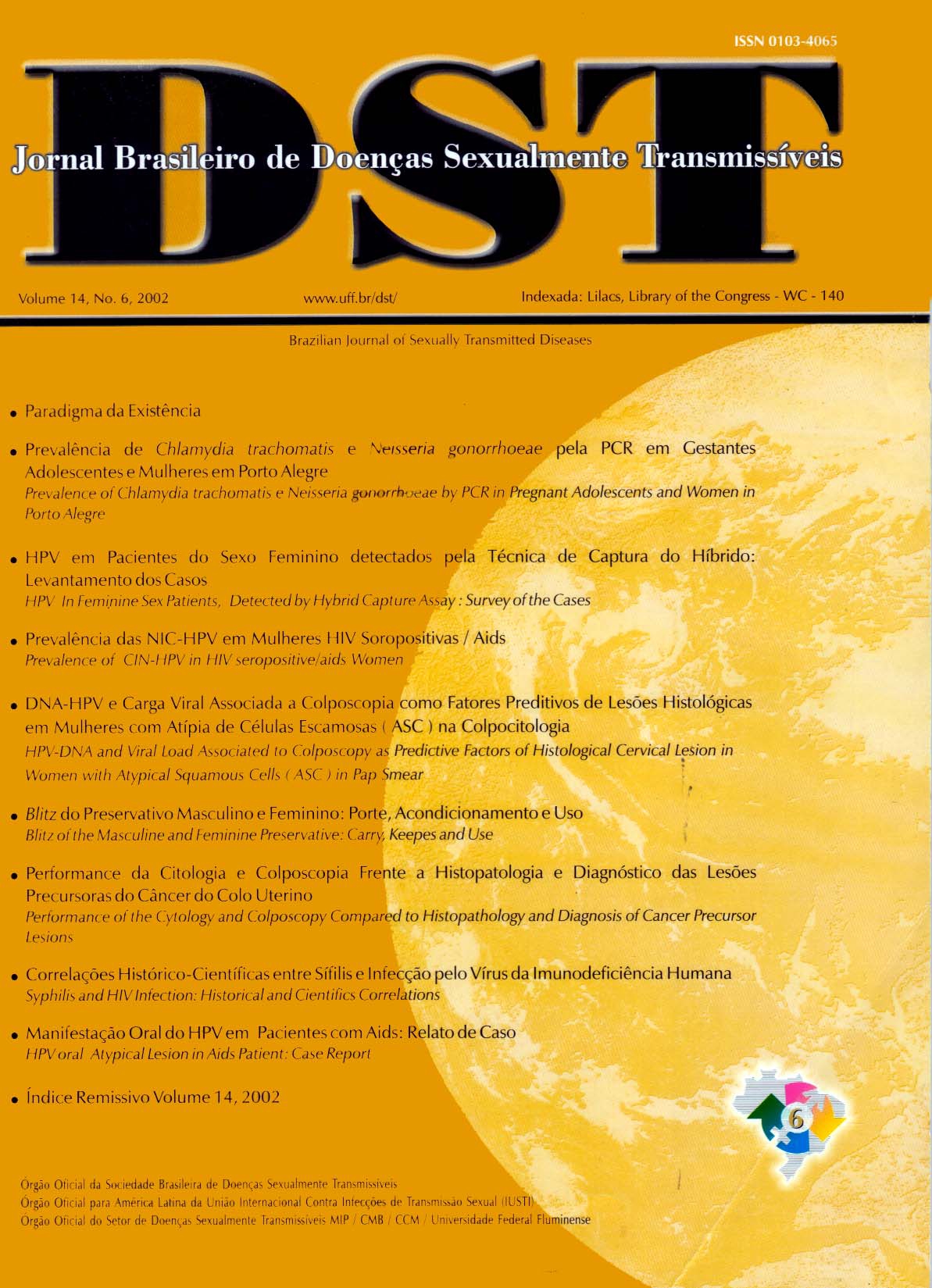Blitz of the masculine and feminine preservative
carry, keepes and use
Keywords:
sexuality, sexually transmitted diseases, sexual educationAbstract
Introduction: The Diseases Sexually Transmissible, healthy as old as the humanity, and that its expasion in the word happened not only with the human being migration, as well as with the increase of the population, precarious condilions of health, sanity, diagnosis, treatment and sexual promiscuity, if constituting like this in a public, allied serious problem of health the epidemic of the Syndrome of Acquired Immunedeficiency - Aids. One in the ways of controlling its increase makes an appointment the use of the preservative, lhe in spite of the entire controvérsia! history, it is still constituted in an of the most effective ways of prevention. This way, it just is not enough to distribute the population, but above all also to know to condition and to use appropriately. This way, for its accomplishment, settled as general objective: to make the blitz of lhe masculine and feminine preservative: carry, keeps and use, ind drivers and passengers of automobiles and walk motorcycles. circulating in public roads of Rio Branco - Acre - Brazil. Methodology: lt is an exploratory-descriti ve study, developed 1011 subjects close to, being 792(78.3%) drivers of automobiles and 219(21.7%) of motorcycles of Rio Branco - Acre - Brazil. For the collection of data, made use of a form with shut subjects, whose Processing and analysis was made in the EPI INFO-6. with frequency presentation and percentile. Under the ethical point of view of the research, it was requested its spontaneous participation, besides guaranteeing the anonymity. Results: The population of the study varied of 18 to 69 year, being 61.7% masculine and 38.3%' feminine. 44.9% were single and 44.9% married and joined. and 38.9% possessed the second complete degree. 52.5% didn’t take I get preservative in the week sexual activity and 41,5% accomplished it. 94.5%' had already used the masculine presevative with 85.2% of acceplance and 94.7% for the parlner. l he data also showed that 49.6% bought the preservative, againsl 45.2% that had received from the government. With relationship to the guards of the masculine preservative place, 36.4% placed it in it carries it glove of the car. proceeded by 19.5%' in the wallet of money of the back pocked of the pants, while for the feminine. 33.3% also placed it in it carries it glove of the car and 66.7% in the bag to shoulder belt. Conclusion: Research highly importam, where the subjects have been making use of the preservative. with great acceplance besides for the partner. Stand out the ones that not and they somentimes took preservative in the weekend with risk for its health. in spite of possessing them inside of lhe period of validity and they be w ith the entire packing. It is still pointed out not the adapted guard of the preservatives, with excessive exhibition to the heat and damage. writh in a certain way they exponse sexually to the risck of not wanted pregnancy and the infection for lhe diseases transmissibles. As the evaluation of the campaign of lhe incentive of lhe use of the masculine preservative for lhe great and good item reached 85.K%< against 32.2 of the feminine, and that 97.1% evaluated this as great and good.












